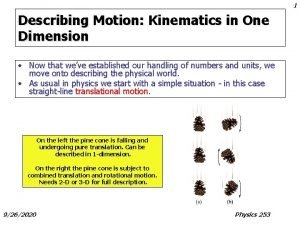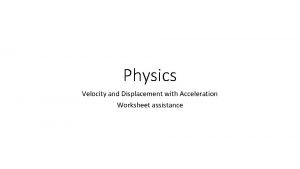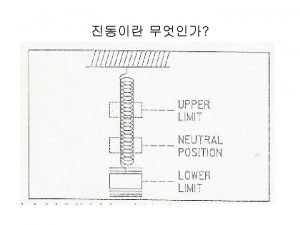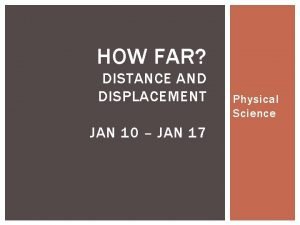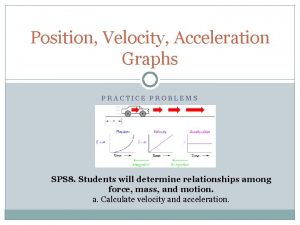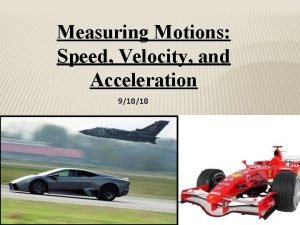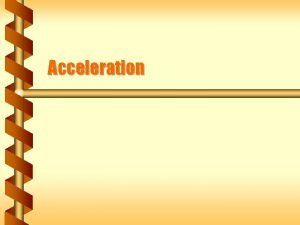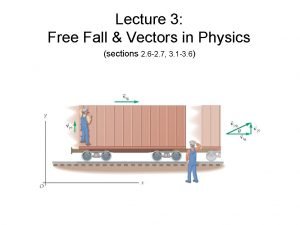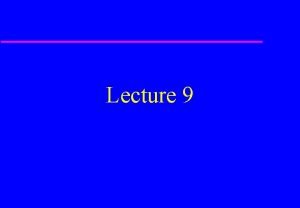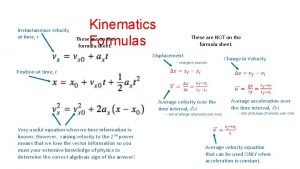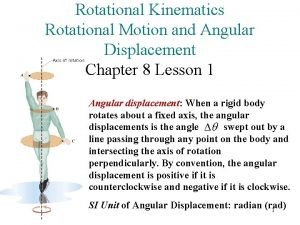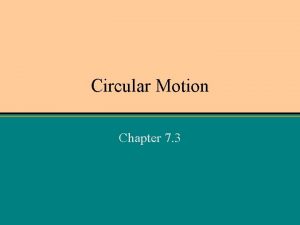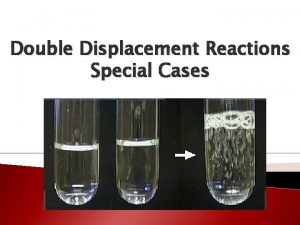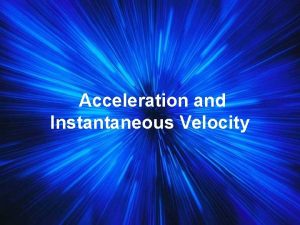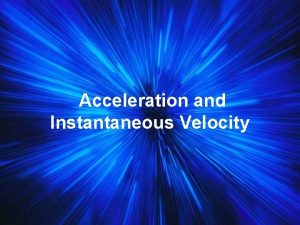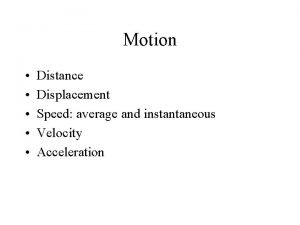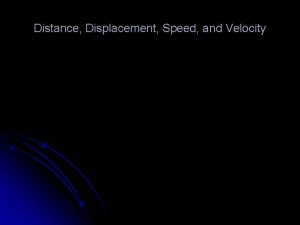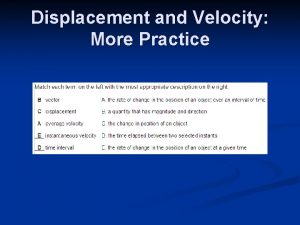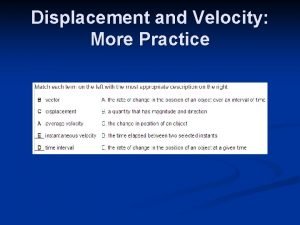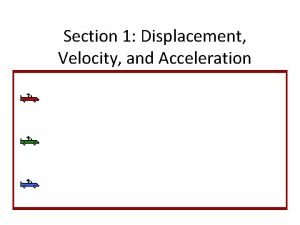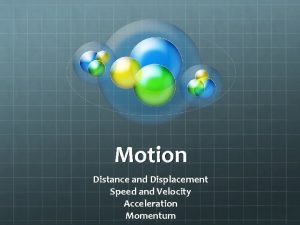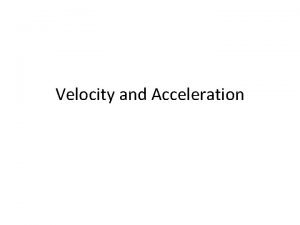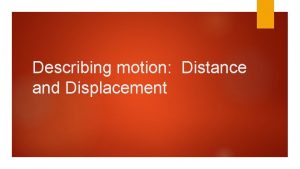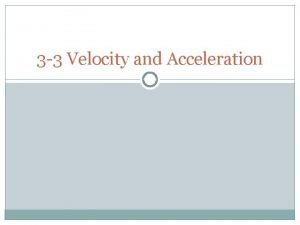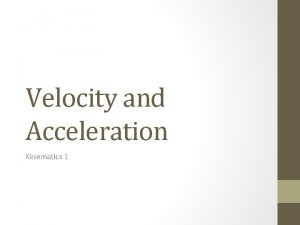Acceleration and Instantaneous Velocity Distance vs Displacement You

















- Slides: 17

Acceleration and Instantaneous Velocity

Distance vs. Displacement • You drive the path, and your odometer goes up by 8 miles (your distance). • Your displacement is the shorter directed distance from start to stop (yellow arrow). • What if you drove in a circle? start stop

Speed • Speed is distance / time or more accurately • Velocity is displacement (with equations using the same symbols!)

Average Speed • Two ways to look at it

Acceleration • Acceleration is a VECTOR quantity • Units: Units of v is m/sec; units of t is sec • Units of a is m/sec 2

What is the velocity at each point? What is the average velocity? Distance vs. Time 12 Distance 10 8 6 V 4 2 0 0 5 10 15 20 Time 25 30 35

What is velocity? What is Instantaneous velocity? is made very small – infinitesimally small

What is happening to the velocity in this diagram?

Finding instantaneous velocity • Find the slope using small values of t and d. • Find the tangent to the line of d vs t.

Instantaneous velocity V 3 V 2 V 1

Acceleration is a change in velocity over time. V 3 V 2 V 1

Is there a meaning to the area under the line? Velocity versus Time 12 Velocity 10 8 6 V 4 2 0 0 5 10 15 20 Time 25 30 35

d=vt The area under the curve is given by v * t. The area under the curve is the distance. Velocity versus Time 12 Velocity 10 8 6 V 4 2 0 0 5 10 15 20 Time 25 30 35

Questions • What if acceleration is in the same direction as velocity? • What if acceleration is in the opposite direction from velocity?

Equations • v = (df - di) / t • vt = (df - di ) df = di + vt • (d = vt) (vf – vi)/t = a • (vf – vi) = at vf = vi + at • We usually ignore Dt = (tf – ti) and just use t since we can arbitrarily start the clock when we declare t=0

Examples Asher is driving at 10 m/sec (22 miles/hour) and accelerates at a rate of 1 m/sec (1 m/sec 2) for a period of 10 seconds. What is Asher’s final velocity? Sarah jumps out of an airplane. Her initial vertical velocity was 0 m/sec. Gravity accelerates a falling body at a rate of 9. 8 m/sec 2 near the surface of the Earth. What is Sarah’s velocity after 5 seconds of free fall? What is this in mph? If Sarah keeps falling for another 5 seconds, will her velocity double? (Hint: Sarah is falling “spread-eagled”)

SAWITESU Show All Work Including The Equation. S and Units
 Instantaneous velocity vs average velocity
Instantaneous velocity vs average velocity Displacement and velocity worksheet
Displacement and velocity worksheet Vibration displacement velocity acceleration
Vibration displacement velocity acceleration Is v final velocity
Is v final velocity What does constant acceleration mean
What does constant acceleration mean What is the difference of distance and displacement
What is the difference of distance and displacement Distance velocity acceleration graphs
Distance velocity acceleration graphs Speed velocity and acceleration formulas
Speed velocity and acceleration formulas Instantaneous acceleration
Instantaneous acceleration You are adding vectors of length 20 and 40 units.
You are adding vectors of length 20 and 40 units. Velocity example pictures
Velocity example pictures Kinematic equation for instantaneous velocity
Kinematic equation for instantaneous velocity How to find velocity in physics
How to find velocity in physics Instantaneous angular velocity
Instantaneous angular velocity Instantaneous velocity circular motion
Instantaneous velocity circular motion Single displacement vs double displacement
Single displacement vs double displacement Linear and angular quantities
Linear and angular quantities Linear acceleration vs tangential acceleration
Linear acceleration vs tangential acceleration
